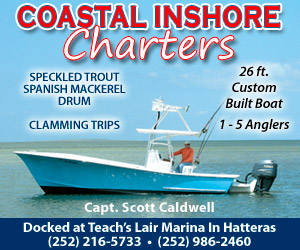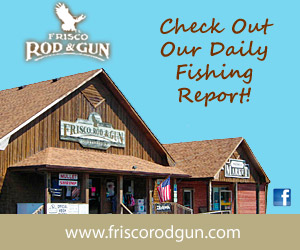The North Carolina Marine Fisheries Commission adopted stricter blue crab regulations at its meeting last week.
According to a news release from the N.C. Division of Marine Fisheries, the measures are meant to improve the condition of the state’s blue crab stock.
Commercial and recreational crabbers should expect most of the regulations to take effect in early June.
The commission voted to:
Require one additional escape ring (two are currently required) in crab pots, and one of the three rings must be located within one full mesh of the corner of the pot and within one full mesh of the bottom of the apron/stairs (divider) of the upper chamber of the pot.
Eliminate the harvest of v-apron immature female hard crabs, excluding peeler crabs, and include v-apron immature female hard crabs in the culling tolerance. The tolerance currently includes only sub-legal male and immature female hard crabs.
Prohibit harvest of dark sponge crabs (brown and black) from April 1-April 30 each year and include dark sponge crabs in the culling tolerance.
Lower the culling tolerance from 10 percent to 5 percent for all crabs, except mature females.
Prohibit crab harvest with dredges, except incidental to lawful oyster dredging as outlined in North Carolina Marine Fisheries Commission Rule 15A NCAC 03L .0203(a)(2).
The Division of Marine Fisheries will issue proclamations to implement the regulatory changes. All of the regulatory changes except the escape ring requirement will take effect June 6 The escape ring requirement will not take effect until Jan. 15, 2017 to allow fishermen to make this gear modification during an annual crab pot closure.
The management action was required under Amendment 2 to the N.C. Blue Crab Fishery Management Plan, adopted by the commission in November 2013. The plan uses an adaptive management framework that requires annual evaluation of a Blue Crab Traffic Light, which consists of three biological indicators. If the indicators meet pre-determined thresholds, management changes are required. The annual evaluation this year found that a management threshold was exceeded.
In other business, the commission:
Approved draft amendments to the Oyster and Hard Clam Fishery Management Plans for departmental and legislative review.
Directed division staff to meet with Wildlife Resources Commission staff, and bring joint recommendations to the August meeting to address problems with striped bass reproduction in the Neuse and Tar rivers; to expedite analysis of fin clip data on samples the division currently has; and to provide a method of determining if the native strain of striped bass still exists in the Neuse and Tar rivers.
Requested that the Conservation Fund Committee meet within 30 days to consider funding DNA testing of striped bass fin clips.
Requested that the division include crab pots in its blue crab sampling gear.
Requested that the division include various gears used by commercial fishermen in various areas in stock assessment sampling, and, when possible, work with commercial and recreational fishermen in the sampling process.
Requested that the commission chair send letters and emails to the Mid-Atlantic Fishery Management Council chair and members expressing the commission’s support for including little tunny (false albacore) and Atlantic bonito in the list of Eco-system Component Species; and express the commission’s support for Alternative 2B of the Unmanaged Forage Omnibus Amendment to designate unmanaged forage species as Eco-system Component Species, and implement an incidental possession limit with a 1,700 pounds total cap and a 1,500 cap on individual species.




